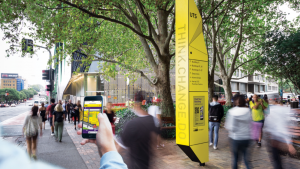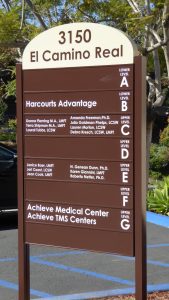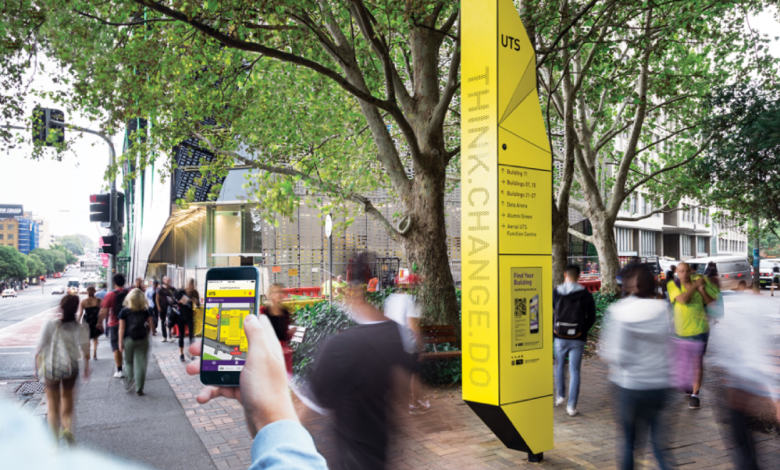Streamlining Outdoor Wayfinding
How to choose the right system and better manage installation
When done well, a wayfinding system should almost be unnoticeable to the average person. A good wayfinding system seamlessly directs traffic in a natural way that matches the environment. The wayfinding system is so efficient that the public doesn’t even realize the signage is strategically leading them through a space.
While that may sound simple enough, designing an effective wayfinding system, especially in large outdoor spaces, is a demanding process. For a sign shop to successfully execute an effective wayfinding project, it takes extensive planning and expertise to handle the challenges that come with designing such an intricate system. But with the right system and an organized plan, sign shops can deliver an effective solution that meets the client’s needs and serves the public well.
Picking the right system
To ensure you pick the right outdoor wayfinding system for the job, Clive Roux, CEO of the Society for Experiential Graphic Design, recommends involving a designer who specializes in wayfinding from the start. Wayfinding designers are trained to look at traffic flows and analyze where bottlenecks happen to determine areas that could cause confusion. Before even proposing a solution, wayfinding designers take the time to survey the space.
Often, wayfinding designers will even produce prototypes to put in the field to confirm their proposed design is the right solution, Roux says. This gives both the sign shop and the client confidence that they are investing in the proper system from the start, making for a better customer experience.
“It’s about understanding the problem before deciding where you’re going to put signs,” Roux says. “You don’t want to just put as many signs into a place as possible. Sometimes a sign is the right solution, but other times, it might be as simple as making a receding doorway more visible. A wayfinding designer will help you determine the issues that will dictate the appropriate solutions.”
Once you determine the right system, you should also consider how often the signs could require changes, says Stewart Curtis, president of Component Signage Inc. For example, if you’re providing wayfinding signage for an area with multiple businesses, company turnover is a common issue that requires updated signage. Some facilities, such as hospitals and schools, often add new buildings and require a signage system that can easily adapt to those changes. In these cases, a modular sign could be a good option.
“Modular signs allow for the addition and removal of existing panels on the signs while also keeping the sign looking unaltered even after the changes have been made,” Curtis says. “Modular systems also allow for the signs to easily be produced in a double-sided configuration or can even be in the shape of a V or cube, which allows multiple viewing angles of the sign. This is beneficial when the traffic or pedestrians are coming from multiple directions.”
Creating the perfect look
From an aesthetics standpoint, sign shops have room for more creativity than in past years, especially with lighting, says Alon Bar, CEO of Vista System. Although LEDs have long been a standard in the signage industry, sign shops are experimenting with how they can place LEDs to achieve different looks. In fact, there are so many lighting options that Bar recommends working with an expert who can help you design your own unique lighting.
“The sky is the limit – you can go very far with being creative and making beautiful signs with LED lighting,” Bar says. “Just as one example, you can light small areas in multiple places to create a different look. There are way more lighting options than you used to have.”
Sign shops can also get creative in how they incorporate digital wayfinding signage. For instance, Jason Hutty, marketing director of PAM, previously worked with a university that predominantly used brownstone buildings and brass signage throughout campus. While the brass signage looked nice within the environment, it didn’t serve users well. The signs blended in so much that users had trouble even noticing the wayfinding signage. At the same time, the university felt that excessively large signs would be out of place and depreciate the environment.

Instead, Hutty’s team integrated a subtle digital system by cutting QR codes into the stone, which allowed users to scan the code and get directions from where they stand.
“While it’s nice to have big signs that people will notice, some facilities are dedicated to keeping the integrity of their environment,” Hutty says. “In those cases, implementing a digital app within your wayfinding system can make a lot of sense because it doesn’t depreciate the environment.”
Curtis says more companies are also turning to branded, unique wayfinding systems rather than your typical cookie cutter sign that could fit in almost any building. Considering that signage is inherently designed to enforce a brand, incorporating those style elements into wayfinding is a natural extension.
“A lot of companies want to brand their entire facility and create a unique look,” Curtis says. “This is often achieved from going beyond the typical square or rectangular sign shape with custom-shaped cabinets. There are also countless options with modular signs where other parts and components can be integrated onto the signs to give them a one-off look while still keeping them economical and functional.”
Consider the elements
Wind load is another important consideration when it comes to choosing the right system, especially as so many customers want to incorporate digital signage, Hutty says. While digital signage can be used outside, some places may be too harsh for that type of signage.

“It’s certainly been the case in the past that digital has struggled outside, especially in places like Florida,” Hutty says. “Although digital hardware is becoming more adept to handling outdoor conditions, it’s important to plan wayfinding signage in a way that not only gives users the best experience possible but to also be cognizant that sometimes a great location for signage won’t work out because of the elements.”
Bar says monumental signs are best for high-wind areas. Although frame systems can work well for outdoor wayfinding, they aren’t the best solution when wind is a factor because they aren’t heavy enough to withstand the elements.
Wind load also affects the type of outdoor lighting system used to illuminate the wayfinding system, Bar says. Although many people prefer the look of using lights inside the sign, it doesn’t work well in windy areas. Instead, Bar recommends using a spotlight to illuminate the sign when wind is an issue.
Stay organized for a smooth installation day
Before installation day, Curtis recommends carefully surveying the specific location for your signs. Given the environmental conditions, some signs may call for slightly different fabrication requirements, or you might need to prep the area prior to installation.
“Sometimes the ground may be on a slope and thus one post needs to be longer than the other, or there may be obstructions or buried lines that need to be marked before digging occurs,” Curtis says. “If the signs need to be mounted onto concrete, then the signs need to be fabricated accordingly and have base plates welded to the bottom of the posts for them to bolt to the concrete.”

For large projects, Curtis says it’s helpful to even dig all of the holes before the final installation. By taking care of this step beforehand, you can immediately set the signs in their footers and concrete into the ground, making for a more streamlined installation.
As you’re implementing an outdoor wayfinding system, Hutty says to make sure you record every sign you create for the area. Many facilities meticulously record their piping and electrical systems, but they fail to do so for their wayfinding signage. If the client needs to make any changes to the system in the future, having this information documented makes the process much more organized.
“If a facility is looking at redeveloping a precinct’s wayfinding system but doesn’t have a database of every sign, it inevitably means you have to start all over again, and that will also affect other precincts,” Hutty says. “It’s important to have a database because it affects wayfinding so much in terms of the user’s journey throughout the facility.”
Creating an outdoor wayfinding signage system is generally a huge undertaking, and sign shops are faced with many considerations when it comes to implementing a seamless, effective wayfinding system. Despite the challenges, a sign shop can successfully execute a project of this stature with the right design partner, a proper system and organized planning in place.




